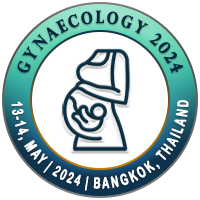
S Kalyani
Southern Railway Headquarters Hospital, IndiaTitle: Pregnancy with severe HOCM- fighting against all odds: A case report
Abstract
Background: Hypertrophic obstructive cardiomyopathy (HOCM) is an inherited condition causing left ventricular outflow tract (LVOT) obstruction, with a prevalence of 1 in 500. Widespread use of echocardiography has led to this disorder being increasingly diagnosed in pregnant women. Knowledge of HOCM is imperative for obstetricians. Pregnancy is generally well tolerated in HOCM but women who are symptomatic prepregnancy or have significant LVOT obstruction can develop complications such as heart failure, arrhythmias and sudden cardiac death.
Clinical case: We report the case of a 33 year old G4P2L1A1 high risk HOCM patient with a family history of sudden cardiac death, who was lost to follow up for the preceding 3 years. She presented at 20 weeks’ gestation with worsening dyspnea (NYHA class III), palpitations and multiple episodes of near-syncope over the past 1 month. Patient was found to have atrial tachycardia. Echo showed a high resting LVOT gradient of 60 mm Hg, moderate to severe MR and dilated LA. Despite these indicators of adverse prognosis, she was managed successfully with anti-failure measures and anti-arrhythmics, under combined cardio-obstetric care. Our hospital being a renowned cardiac tertiary care centre, this patient, from far away rural India, chose to remain an inpatient for the remainder of her pregnancy, even after attaining NYHA II functional status. Stage I FGR was diagnosed and a course of antenatal corticosteroids was given at 33 weeks. Under graded epidural anaesthesia and phenylephrine support to avoid hypotension, patient underwent elective LSCS at 35+ weeks to deliver a healthy 1.9 kg baby. Though vaginal delivery with regional analgesia is appropriate in HOCM, our patient was delivered by LSCS due to a history of previous 2 LSCS deliveries, including one preterm LSCS. Intraoperative complications encountered were atonic PPH, managed with B Lynch sutures and pulmonary oedema, managed with judicious diuretics and CPAP. Postoperatively, thromboprophylaxis was given.
Conclusion: This case emphasises close monitoring and multidisciplinary team management in high risk HOCM mothers. Evidence based management of HOCM is discussed. Prepregnancy evaluation, risk assessment and genetic counselling are stressed upon.
Biography
S Kalyani is a chief gynecologist at Southern Railway Headquarters Hospital, India.

